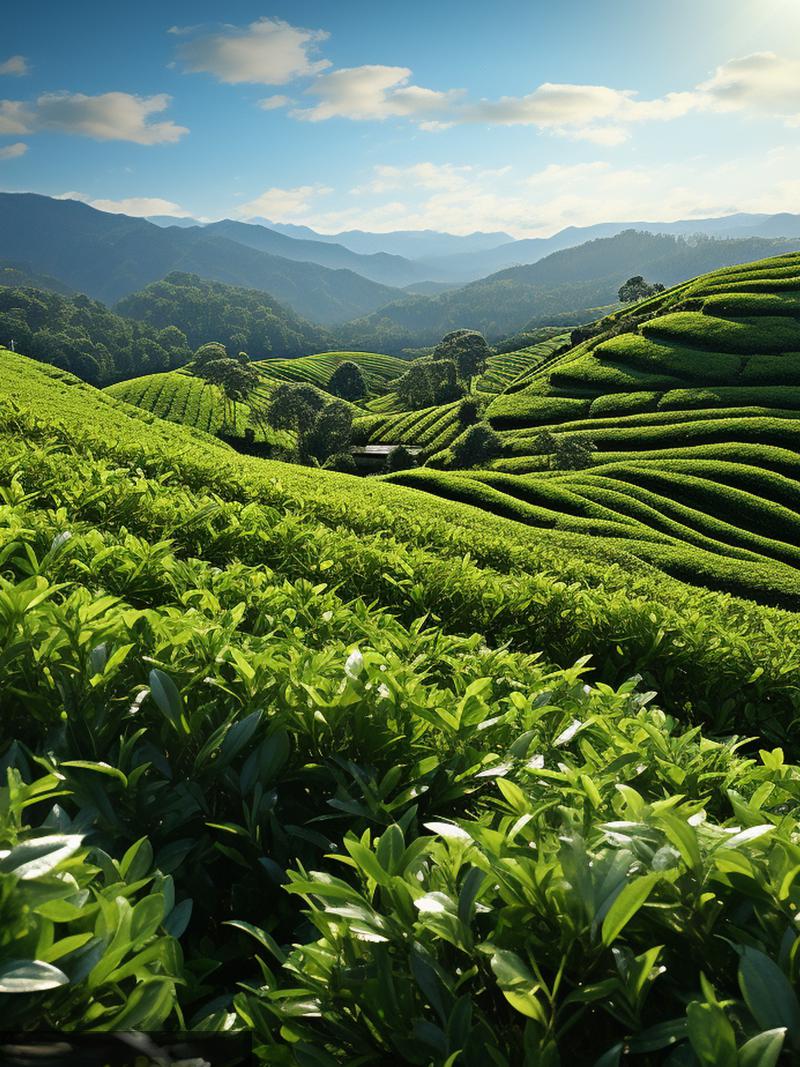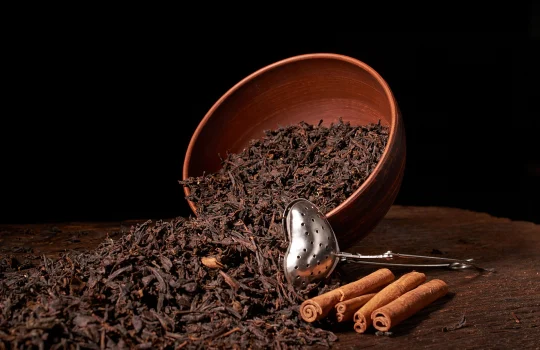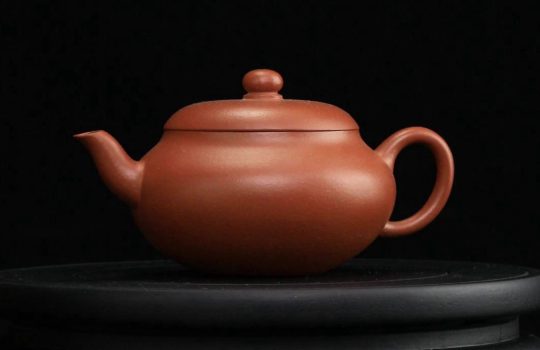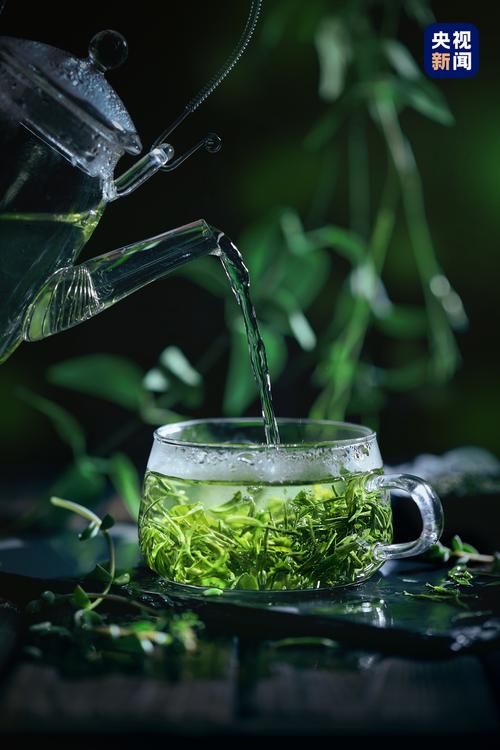The main distribution area of tea
China’s vast territory, diverse climate, since ancient times is a large tea-producing countries. Due to the vast area of China’s tea area, in accordance with the national standards for the division of tea areas, so the country’s tea-producing land is divided into three levels of tea areas, namely, one, two, three tea areas. First-class tea area, is a national division, used for macro-guidance.
View guide; secondary tea area, is the tea-producing provinces Wuyishan Tea Garden
(District) division, used to guide the production of provincial areas; three tea areas, is divided by various places, counties, used to specifically direct the tea production.
China’s first-class tea district is divided into four, namely, Jiangbei tea district, South China tea district, Southwest tea district and Jiangnan tea district.
1. Jiangbei Tea District
Jiangbei tea area is China’s most northern tea area, it is the Yangtze River in the south, north to the Qinling Mountains, Huaihe River, west from the Daba Mountains, east to the Shandong Peninsula, including Henan, Shaanxi, Gansu, Shandong and other provinces and Anhui.
Jiangsu, northern Hubei and other places.
Jiangbei tea area has a complex topography, the soil is mostly yellow-brown loam, a few for the brown loam, for China’s north and south of the transition type of soil, many places in the soil pH is high. Here in the tea area, the average annual temperature is 15 ℃ ~ 16 ℃, the absolute minimum temperature in winter is usually about -10 ℃. The annual precipitation is low, about 700~1000 mm, unevenly distributed, often making the tea trees suffer from drought. However, although only a small part of the tea region has a favourable climate, most of the tea trees planted are shrubby medium-leaved and small-leaved species, but the quality of the tea produced is not inferior to other tea regions.
2. South China Tea Region
South China Tea District is located in southern China, in Lianjiang, Hongshui River, Nanpanjiang, Baoshan south, including Guangdong, Guangxi, Fujian, Taiwan, Hainan and other provinces (autonomous regions).
South China tea area most places for the reddish soil, a small part of the yellow soil. South China Tea District has rich water and heat resources, tea plantations in the forest cover, the soil is very fertile, very rich in organic matter content, the average temperature here is as high as 19 ℃ ~ 22 ℃, the lowest monthly average temperature of 7 ℃ ~ 14 ℃, the annual precipitation for the Chinese tea area is the most, generally 1200 ~ 2000 mm. Among them, Taiwan has the most abundant rainfall, with annual precipitation often exceeding 2000mm. Tea area soil layer is deep, rich in organic matter content, for China’s most suitable for the growth of tea trees. The area is rich in species resources, trees, small trees, shrubs and other types of tea varieties, the production of black tea, oolong tea, flower tea and six fort tea at home and abroad are more famous.
3.Southwest Tea District
Southwest Tea District is China’s oldest tea district. It is located in the Mielun Mountains, Red River, Shennongjia, Wushan, Wuling Mountains to the west, east of the Dadu River, including Yunnan, Guizhou, southeastern Tibet and Sichuan Province.
The Southwest Tea Region is the oldest tea region in China. Here the terrain is very complex, to the basin, plateau-based, some of the same latitude areas of altitude disparity, the climate varies greatly, most of the areas belong to the tropical monsoon climate, not cold in winter, not hot in summer, Yunnan is mainly reddish red loam and mountain reddish loam, Sichuan, Guizhou and southeastern Tibet to the yellowish loam is dominated by a small amount of brownish loam. Soil organic matter content is generally richer than other tea areas. Southwest tea region grows a lot of tea tree species, mainly shrub type and small tree type tea tree, some areas have tree type tea tree. The region is rich in tea tree varieties and produces black tea, green tea, tuocha, pressed tea and pu’er tea, etc. It is one of the main bases for the development of large-leaf tea in China. The production of black tea has Dian Hong Gongfu black tea, Yunnan red tea, green tea has Mengshan Ganlu, Meng Ding tea, Duyun Mao Jian, Mengshan Chunlu, bamboo leaf green, moth-eyebrow Mao Feng, black tea Pu’er Tea, Yunnan Tuocha and so on.
4. Jiangnan Tea District
Jiangnan Tea District is located in the south of the Yangtze River, Meijiang, Lianjiang, north of Yanshi Creek, including Zhejiang, Hunan, Jiangxi and other provinces and southern Anhui, Southern Jiangsu, E’nan and other places. Jiangnan tea area is mainly distributed in the hilly areas, a few in the higher elevation of the mountainous areas, such as Tianmu Mountain in Zhejiang, Wuyi Mountain in Fujian, Mount Lu in Jiangxi, and Huangshan Mountain in Anhui. This is the main production area of tea in China, with an annual output of about 2/3 of the total output.
The soil of Jiangnan tea area is mainly red soil, partly yellow or brown-yellow soil, and a few are alluvial soil. The climate of the region is distinct in four seasons, with an average annual temperature of 15℃~18℃, the absolute minimum temperature in winter is generally around -8℃, the average annual precipitation is 1400~1600mm, with the most rain in spring and summer, which is about 60%~80% of the annual precipitation, and drought in autumn. Most of the tea trees planted in the area are shrub type medium-leafed species and small-leafed species, as well as a small number of small tree type medium-leafed species and large-leafed species. It mainly produces green tea, black tea, black tea, flower tea, as well as various qualities of speciality teas, such as Xihu Longjing, Dongting Biluochun, Junshan Silver Needle, Lushan Yunwu, Jiuqu Red Plum, Xiusui Ninghong, and so on.




